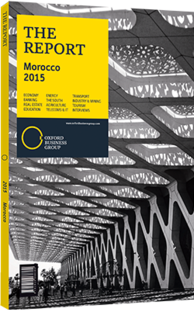Morocco extends regional ties with Africa
A tour of West and Central Africa by Morocco’s head of state in May 2015 has underlined the country’s increasing efforts to strengthen trade and investment ties with its neighbours south of the Sahara.
Morocco’s government has sought to expand the country’s economic footprint in Africa in recent years, with King Mohammed VI spearheading a number of trips to West and Central African markets. The May delegation, which also included ministers and business leaders, followed a four-nation itinerary across West Africa. Facilitating investment and increasing economic cooperation were the focus of the tour – the third such trip to the region in as many years – which included stop-offs in Senegal, Côte d’Ivoire, Guinea-Bissau and Gabon.
The tour included the signing of dozens of cooperation and technical agreements, as well as a number of modest capital commitments, across a wide swathe of sectors ranging from agricultural support in Côte d’Ivoire to vocational training in Senegal.
Long-Term Strategy
The new agreements add to a number that have been inked by Morocco and sub-Saharan economies in recent years and comprise a broader push to boost the country’s trade and investment profile in the region. With its traditional primary trade partner Europe still grappling with economic difficulties, the last few years have been of significant benefit in some ways for Morocco, prompting the country to strengthen its links with trading partners beyond the eurozone – with Africa one of the principal targets.
As a result, trade between Morocco and sub-Saharan African countries rose by an average of 12% annually between 2003 and 2013, according to figures from the Ministry of Economy and Finance (Ministére de l’É- conomie et des Finances, MEF), with exports to the region increasing by an average of 18% annually. However, in absolute terms, the total volumes are still modest, at less than 7% of total trade.
The kingdom has already granted most favoured nation status to eight West African economies and six Central African economies, but if Morocco manages to make progress on the long-awaited free trade agreement (FTA) with the Western African Economic and Monetary Union (Union Economique et Monétaire Ouest Africaine, UEMOA), those numbers would most likely go up even further.
UEMOA comprises eight countries, including Senegal, Côte d’Ivoire, Niger, Mali and Benin – markets where dozens of Moroccan firms already have a presence as a result of recent expansion. Trade with the UEMOA represented less than a tenth of overall volumes in 2014, but the country has a significant trade surplus with the region and an eventual signing of this key FTA would further bolster the attraction of Morocco as an investment base into wider Africa.
A report by the MEF in September 2014 also noted that the country is looking to negotiate strategic trade partnerships with both the 15-member Economic Community of West African States and the six-member Economic and Monetary Community of Central Africa.
Investment Ties
The past decade has also seen Moroccan companies – particularly financial institutions – expand their sub-Saharan Africa footprint through numerous acquisitions across the continent, with Moroccan banks now present in more than 20 African countries. The country’s largest banks, including Attijariwafa and BMCE Bank, made several acquisitions in the immediate aftermath of the global financial crisis, as European lenders pulled out of emerging markets to concentrate on core regions. However, the momentum has continued since then.
One of the more recent examples is BCP’s acquisition of a 50% interest in Côte d’Ivoire’s Groupe Banque Atlantique, which has a footprint in eight African countries. While Groupe Banque Atlantique was mostly focused on corporate banking, 2014 saw BCP launch a pilot project in retail banking in Côte d’Ivoire and Senegal, with a plan to eventually roll out retail banking to all eight countries. In light of the low banking penetration rates in many West and Central African countries, the overall growth potential is extraordinary.
You have reached the limit of premium articles you can view for free.
Choose from the options below to purchase print or digital editions of our Reports. You can also purchase a website subscription giving you unlimited access to all of our Reports online for 12 months.
If you have already purchased this Report or have a website subscription, please login to continue.

